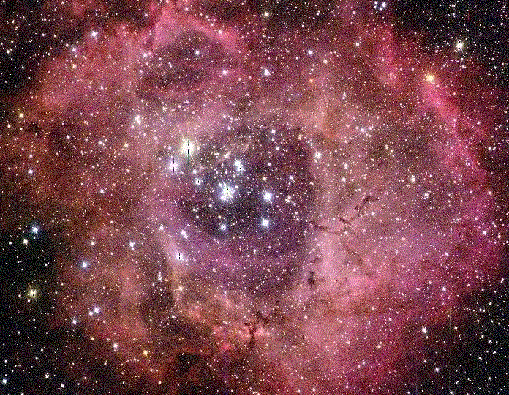Explanation: Embedded in the center of the colorful and photogenic Rosette Nebula is a bright, young open cluster. The bright blue stars in this cluster, labelled NGC 2244, emit ultraviolet light that knocks electrons away from hydrogen atoms. When the electrons fall back, they emit the red light which distinctively defines the glow of all emission nebulae. The Rosette Nebula is thousands of light years distant, but light would take only about 100 years to cross it. The Rosette Nebula is not difficult to observer and, although faint, actually appears larger than the full moon.
1999 2000 2001 2002 2003 2004 2005 2006 2007 2008 2009 2010 2011 2012 2013 2014 2015 2016 2017 2018 2019 2020 2021 2022 2023 2024 2025 |
Yanvar' Fevral' Mart Aprel' Mai Iyun' Iyul' Avgust Sentyabr' Oktyabr' Noyabr' Dekabr' |
NASA Web Site Statements, Warnings, and Disclaimers
NASA Official: Jay Norris. Specific rights apply.
A service of: LHEA at NASA / GSFC
& Michigan Tech. U.
|
Publikacii s klyuchevymi slovami:
star cluster - Rosette Nebula - Tumannost' Rozetka - emissionnaya tumannost' - Rasseyannoe skoplenie
Publikacii so slovami: star cluster - Rosette Nebula - Tumannost' Rozetka - emissionnaya tumannost' - Rasseyannoe skoplenie | |
Sm. takzhe:
Vse publikacii na tu zhe temu >> | |
